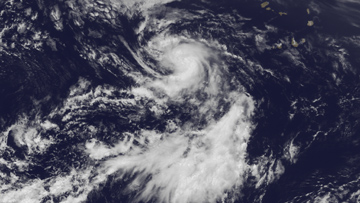In August of 1942, a tropical storm churned to life in the Caribbean Sea. It brought heavy rains to Honduras and Belize, plowed across the Yucatan, then hit the coast near Tampico, Mexico. Finally, it slid into the Rio Grande Valley of Texas, where heavy rains damaged the cotton crops before the storm fizzled.
 Image of Tropical Storm Dorian on July 24, 2013. Credit: National Oceanic and Atmospheric Administration
Image of Tropical Storm Dorian on July 24, 2013. Credit: National Oceanic and Atmospheric AdministrationIt was so minor that it was overlooked by record keepers — until 2013. Researchers with the National Oceanic and Atmospheric Administration found the storm in weather records and newspaper accounts. They added it to their database of Atlantic storms that goes back to 1851.
Researchers have been carefully perusing the records of earlier storms for more than a decade. Their efforts have yielded dozens of previously uncataloged storms up to 1945, and resulted in changes to the details about many known storms.
The revised catalog provides a better accounting of many hurricane seasons. Among other things, that’s important for researchers who study possible changes in the intensity of hurricane seasons as a result of climate change.
It was tough to track storms in decades past because there were no weather satellites, no global network of weather stations, and poor communications. A storm could come and go with little notice — especially if it didn’t make landfall near a city. And during World War II, ships couldn’t pass along weather observations because their routes were classified.
The new analysis will fill in some of the gaps — providing the best accounting yet of stormy seas.

